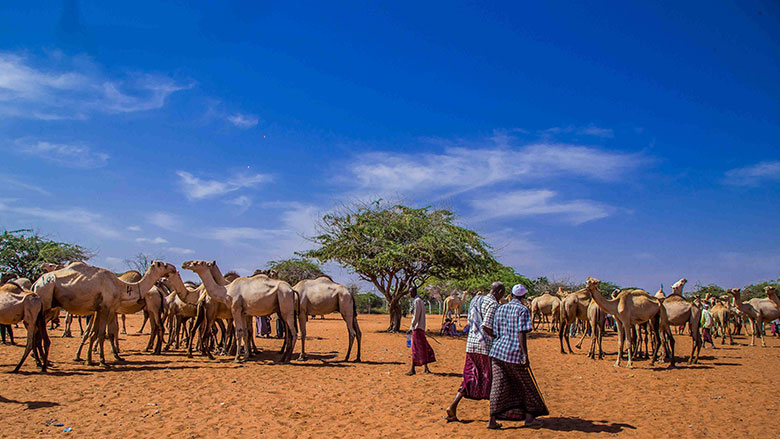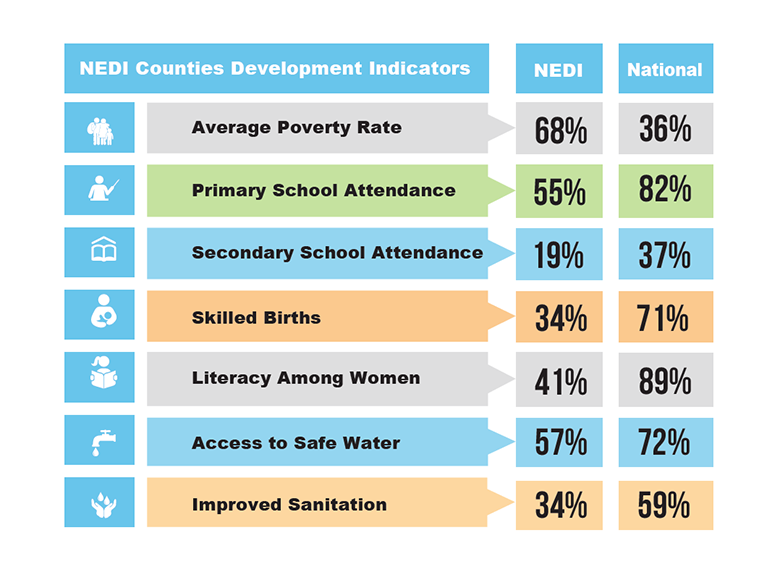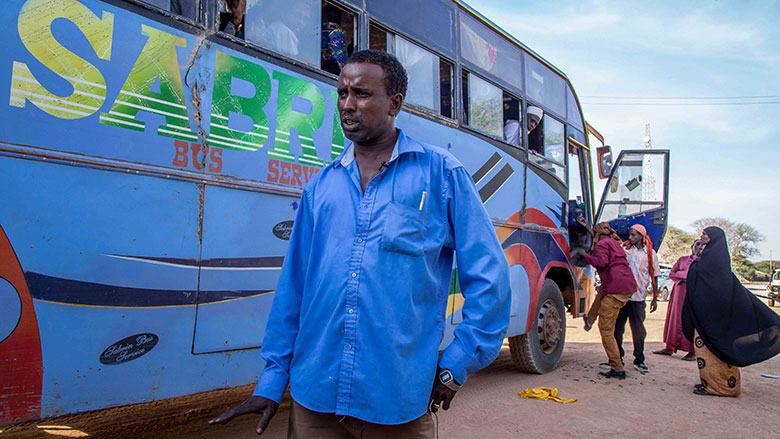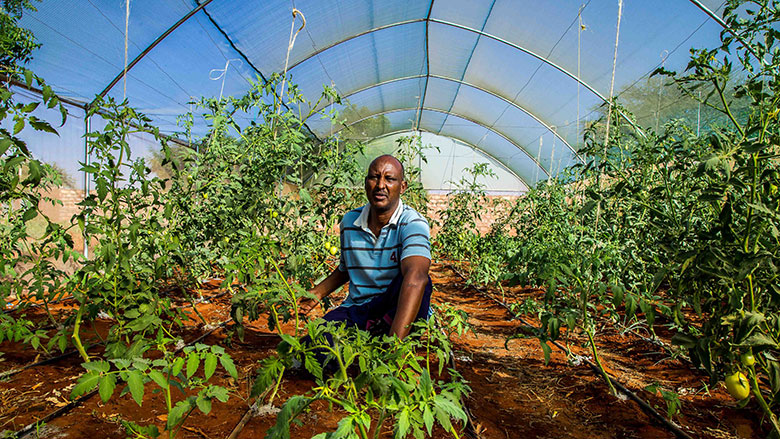Improving Lives and Livelihoods
The North and North Eastern regions are characterized by profound infrastructure deficits, including lack of access to roads, electricity, water, and to social services.
“Think about it; if there is no electricity, communities will live in the dark with limited ability to cease economic and social opportunities,” said Helene Carlsson Rex, World Bank program leader for sustainable development. “Without roads, people have difficulties accessing jobs, markets and to social services.”
The region is in dire need of electricity connection.
“We are not connected to the National Grid, as such we have limited power supply through diesel generators and also limited to a few towns, the rest of the towns don't have any electricity connection,” said Ali Roba, the governor of Mandera.
To increase access to electricity in the region, the Kenya Off-Grid Solar Access Project will harness the area’s renewable energy resources. Mini-grids in underserved counties will provide electricity services to households, community facilities and boreholes, and efficient cookstoves. This way, the project will reduce energy poverty by increasing access to modern energy services in these counties.
Abdi Mohamed is a bus driver plying the Wajir-Nairobi route through Garissa. Tyre bursts, accidents and dust characterize his 20-hour journey, a driving distance of about 625 kilometers. Tintseh/World Bank.
Through the North-Eastern Transport Improvement Project, roads will be improved, travel time reduced and, it will also provide access to jobs and markets to the people living along the corridor. The Water and Sanitation Development Project will connect households to piped water, provide community water points, and improve sanitation services in Wajir town and for Dadaab host communities in Garissa County.
Pastoralism and agriculture are the foundations of the economy, but their huge potential remains unexploited. Harnessing this potential would improve livelihoods of the local people and, the region can become a breadbasket that can feed the growing market for agricultural produce and livestock products in the Horn of Africa. The Kenya Climate Smart Agriculture Project intends to increase productivity of livestock systems, promote integrated soil fertility and market access.
“This way, the communities in the northern arid lands will be empowered to effectively exploit the livestock and crop farming potential,” said Gandham N.V. Ramana, World Bank program leader for human development. “Value chains will be improved through strengthening of partnerships with the private sector.”
Bishar Nur, a farmer in Wajir County, has adopted climate-smart farming techniques such as planting under a greenhouse and using a drip irrigation system which have helped him mitigate the scarcity of water. Tintseh/World Bank.
Supporting Refugees and Host Communities
The protracted presence of large numbers of refugees in this region has had an impact on the environment due to deforestation as well as excessive use of water, reducing the water table. Presently, the area is hosting over 600,000 displaced persons from the neighboring countries.
The Kenya Development Response to Displacement Impacts Project will improve access to basic social services, expand economic opportunities, and enhance natural resource management for communities hosting refugees in the sub-counties of Turkana West, Wajir South, Fafi, Lagdera and Dadaab in Kenya.
“By improving the severely degraded environment and making sure there is resilience through livelihood initiatives for example, much more sustainable local economies will be created,” Ramana said.
Through the $50 million additional financing to the National Safety Net Program, the existing program coverage for this region will be expanded with additional 50,000 new households. The expanded program aims to promote more equitable growth and to increase resilience of poor and vulnerable families through regular cash transfers.





